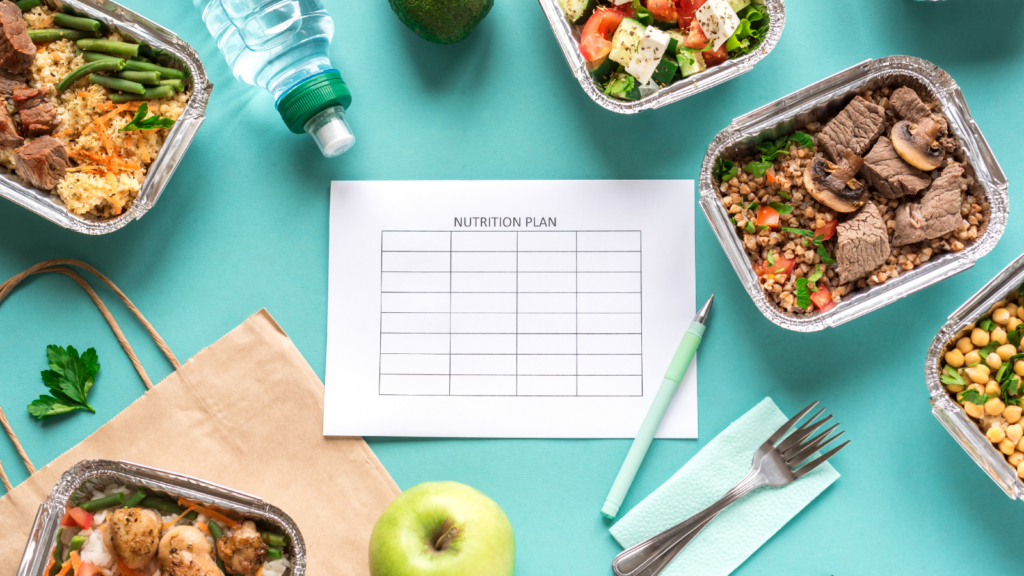In the bustling world of middle school education, nutrition often takes a backseat. But what if it didn’t have to? Imagine a curriculum where nutrition isn’t just a sideline, but a central player in the game of learning. This article dives into the fascinating realm of nutrition lesson plans for middle school students, a vital tool in shaping their understanding of health and wellness.
Nutrition Lesson Plans Middle School
 Nutrition education occupies a crucial position in the holistic development of middle schoolers. This segment elucidates its importance in the cognitive development and wellbeing of young adolescents.
Nutrition education occupies a crucial position in the holistic development of middle schoolers. This segment elucidates its importance in the cognitive development and wellbeing of young adolescents.
Nutrition plays a pivotal role in the overall cognitive development of middle school students. A well-rounded diet fuels their brains with essential nutrients such as omega-3 fatty acids, vitamins, minerals and antioxidants. These nutrients, found in common foods such as fish, fruits, and vegetables, significantly enhance memory, attention, and mood. For instance, a lunch packed with leafy greens and lean proteins enhances alertness and cognitive function.
Adapting Nutrition Lesson Plans for Diverse Learners
Effective nutrition lesson plans middle schools offer consider various student needs, be it learning preferences or dietary restrictions. Here’s how to adopt an inclusive approach.
Strategies for Accommodating Different Learning Preferences
Adaption of lesson plans accommodates different learning styles. For instance, students leaning towards auditory learning engage more productively in nutrition discussion forums. Visual learners, on the other hand, benefit from charts displaying nutritional values of food items. Meanwhile, kinesthetic learners find interactive activities like cooking demonstrations engaging. A diverse teaching approach involves students effectively in nutrition education.
Including Students with Allergies and Dietary Restrictions
 Students with allergies or dietary restrictions may feel excluded from standard nutrition lessons. However, an inclusive environment gets created by incorporating details about various food allergies, cross-contamination, and using substitutes in recipe planning in lesson plans. Additionally, discussions about dietary restrictions due to religious, ethical, or health reasons offer relevant nutrition knowledge for restricted dietary choices. These steps build comprehensive, sensitive, and inclusive nutrition education.
Students with allergies or dietary restrictions may feel excluded from standard nutrition lessons. However, an inclusive environment gets created by incorporating details about various food allergies, cross-contamination, and using substitutes in recipe planning in lesson plans. Additionally, discussions about dietary restrictions due to religious, ethical, or health reasons offer relevant nutrition knowledge for restricted dietary choices. These steps build comprehensive, sensitive, and inclusive nutrition education.
Tools and Resources for Nutrition Lesson Plans
This section explores various tools and resources that can aid the teaching and understanding of nutrition. Ranging from mobile applications to books, these resources encompass the perfect blend of information and engagement for middle schools.
Useful Mobile Apps and Online Tools
Several mobile applications and online tools exist that can simplify nutrition education. For instance, ‘MyPlate’ helps students grasp the concept of balanced meals. It illustrates how to proportion meals using different food groups. ‘Fooducate’ is another app that allows students to scan barcodes on packaged food, revealing nutritional content, and it can highlight healthier alternatives.
Recommended Books and Educational Videos
Educational books like “Eat This, Not That! for Kids” provide insights about making healthier food choices in a format appropriate for middle schoolers. Likewise, “Nutrition: Concepts and Controversies” offers an exploration into common dietary misconceptions. These resources promote a fun and interactive way for students to delve deeper into the subject of nutrition.
Engaging Parents in the Nutrition Education Process
 Cultivating parents’ participation influences students’ receptivity towards nutrition education. They foster home-based practices that reinforce middle school lessons about healthy eating, combating childhood obesity. A direct medium of contact, parents communicate nutritional values to children, impacting their dietary choices. Parents also back up learning from interactive cooking classes and health-focused science experiments, strengthening children’s grasp of nutrition.
Cultivating parents’ participation influences students’ receptivity towards nutrition education. They foster home-based practices that reinforce middle school lessons about healthy eating, combating childhood obesity. A direct medium of contact, parents communicate nutritional values to children, impacting their dietary choices. Parents also back up learning from interactive cooking classes and health-focused science experiments, strengthening children’s grasp of nutrition.
Parents can address students’ unique learning preferences and food allergies by adapting nutrition lesson plans middle school. They can aid learning with mobile apps, online tools, books, and videos, playing a vital part in extending nutrition education beyond middle school. Assessment techniques, including pre-assessment strategies and rubric evaluations, enable parents to notice progress and areas for improvement in their child’s understanding of nutrition.
Healthy Habits Start Here
Integrating nutrition education into middle school curriculum is a powerful tool in combating childhood obesity and fostering lifelong healthy eating habits. By engaging students in interactive activities, they’re able to gain a solid understanding of nutritional content and how to make balanced dietary choices. So, it’s clear that a comprehensive approach to nutrition education, involving both school and home environments, is key to promoting healthier futures for our middle school students.

